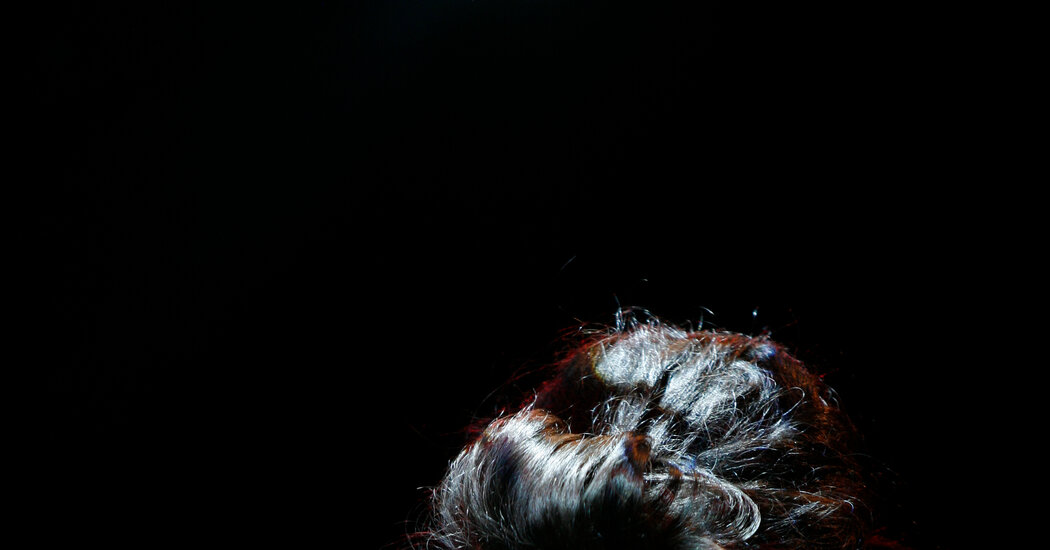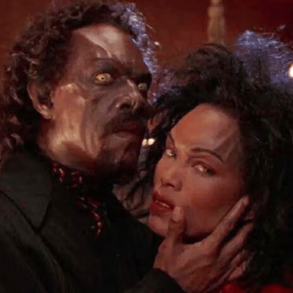
In her perceptive cultural history, “Eyeliner,” Zahra Hankir shows that liquid versus pencil is only the beginning.
EYELINER: A Cultural History, by Zahra Hankir
In August 2014, I was drinking alone in North London. I Googled an address, then climbed into a cab and gave it to the driver: 30 Camden Square. The car pulled up to a four-story home in a leafy neighborhood, and I immediately felt embarrassed by my macabre mission. But I’d come this far. I got out of the car. The house where Amy Winehouse had died three years earlier was behind a black fence and a white wall. Across the street, there was a clearing with a tree, where a memorial collection had accumulated: photos of the beloved jazz-pop singer, flowers, candles, whiskey bottles.
I got down on my knees and said a prayer. “Love you, Amy,” I mumbled. Then I left a MAC Liquidlast 24-Hour Waterproof Liner in Point Black.
This anecdote would not be out of place in “Eyeliner: A Cultural History,” the engrossing and appealingly monomaniacal new book by Zahra Hankir. “There’s more to eyeliner than meets the eye,” asserts the Lebanese British journalist — who wears eyeliner “to Pilates, to the bodega.” “To open your eyes to the fascinating path that eyeliner has drawn through space and time is to embark on a journey freighted with meaning — if not outright magic.”
The book begins with an index of the inky stuff. There’s kohl, kajal, ithmid (“the purest form of kohl”), “Western” eyeliner (powder, pencil, pen, liquid, cream and gel), Nigerian tiro and so-called guyliner (“eyeliner worn by men”). Eyeliner is worn by Russian ballerinas, flappers, Alexandria Ocasio-Cortez, Keith Richards, Paris Fashion Week models and members of the Taliban alike.
The author is less concerned with the cosmetic in contemporary pop culture (a shout-out to Taylor Swift’s cat-eye is mercifully brief), and more about the “glorious and profound histories swirling around” it — particularly how people of color continue to turn to it as an essential part of their heritage.
She takes us on a whirlwind tour: to the Neues Museum in Berlin, where the bust of the Egyptian queen Nefertiti, dating to between 1351 and 1334 B.C., sits behind bulletproof glass; to the Chari-Baguirmi region of Chad, where Wodaabe men not only wear liner on days they perform in the annual Worso festival, but carry mirrors “to keep their looks, especially their kohl, in check”; to Iran, where its cosmetic use, according to one woman, is “a tool for female empowerment and civil disobedience.”
We visit Petra, Jordan, to meet Bedouin hunks, some cave-dwelling, who admit they use kohl “because they are aware that women, mainly white tourists, may find them more attractive that way.”
Hankir also explores the “expressive and transgressive” “winged” chola aesthetic rocked by young Mexican American women in Southern California, along with the Indian classical dance performance kathakali, for which male performers in Kerala carefully pile on the kajal for an hour before taking the stage.
Each chapter is more interesting than the last. Hankir doesn’t take her subject too seriously; her history lessons are peppered with cultural references and good humor. The book is also a smoky-eye lover’s paradise: an orgy of makeup rituals, of tips and tricks, of brands to try. The author’s visit to Tokyo’s Don Quijote department store, where “an entire section is devoted to eyeliner” containing shades like “pistachio latte,” is thrilling, while in a different section, the Brooklyn-based Lebanese drag queen Anya Kneez recommends Haus Labs by Lady Gaga, which “doesn’t streak or slip.”
Culture vultures get their due. Gwen Stefani, Lana Del Rey and the French fashion house Givenchy are called out for cultural appropriation, and ABC News’s Diane Sawyer is criticized for speaking “with trepidation about girl gangs dressed in the chola aesthetic, their eyes heavily lined,” in the 1990s. Even Winehouse gets a swipe for borrowing from Black girl groups like the Ronettes, and her trademark style — “full eyebrows, heavy eyeliner, bright red lipstick and large hoop earrings” — from Latina women she encountered in Miami.
Hankir devotes a full chapter to Winehouse and her trademark dramatic “eyeliner wings by Rimmel,” and it is personal and affecting. Winehouse is described as “lacking the hand-eye coordination required to master her makeup” before a 2011 performance in Belgrade, Serbia. Frustrated, the singer goes onstage barefaced. “That’s when I knew she wasn’t well,” Winehouse’s former hairdresser tells Hankir.
The singer would die from alcohol poisoning just over a month later — in the aforementioned London house. Hankir, too, visits Camden Town, where Amy lived and died. She finds the bronze statue of Amy on Chalk Farm Road that was erected in 2014, noting “its signature wings etched onto its face.”
“Like Nefertiti, like Neneh, Amy was such a queen herself,” the makeup artist Sharon Dowsett tells Hankir near the end of “Eyeliner.” Dowsett adds that she doesn’t like eyeliner to be perfect. “I like it if it’s a bit destroyed in that it tells a story, it makes it far more engaging and interesting.”
EYELINER: A Cultural History | By Zahra Hankir | Penguin | 327 pp. | $26
This post was originally published on this site be sure to check out more of their content.








